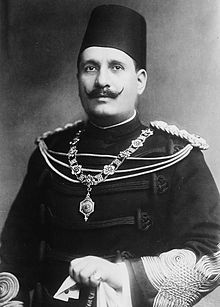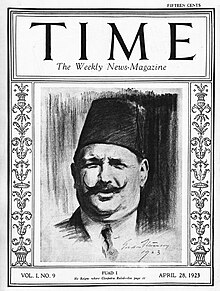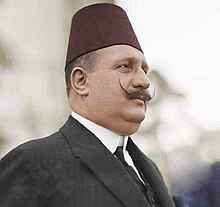
Farouk I was the tenth ruler of Egypt from the Muhammad Ali dynasty and the penultimate King of Egypt and the Sudan, succeeding his father, Fuad I, in 1936 and reigning until his overthrow in a military coup in 1952.
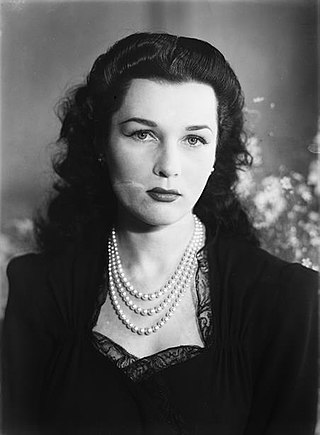
Fawzia of Egypt, also known as Fawzia Pahlavi or Fawzia Chirine, was an Egyptian princess who became Queen of Iran as the first wife of Mohammad Reza Pahlavi, Shah of Iran. Fawzia was the daughter of Fuad I, seventh son of Ismail the Magnificent. Her marriage to the Iranian Crown Prince in 1939 was a political deal: it consolidated Egyptian power and influence in the Middle East, while bringing respectability to the new Iranian regime by association with the much more prestigious Egyptian royal house. Fawzia obtained an Egyptian divorce in 1948, under which their one daughter Princess Shahnaz would be brought up in Iran. Fawzia, who was known as the "sad queen" in the press, lived in isolation and silence after the 1952 Egyptian revolution and never published her memories of the court of Iran and Egypt.

Isma'il Pasha, also known as 'Ismail the Magnificent, was the Khedive of Egypt and ruler of Sudan from 1863 to 1879, when he was removed at the behest of Great Britain and France. Sharing the ambitious outlook of his grandfather, Muhammad Ali Pasha, he greatly modernized Egypt and Sudan during his reign, investing heavily in industrial and economic development, urbanization, and the expansion of the country's boundaries in Africa.

Mustafa Fazıl Pasha was an Ottoman-Egyptian prince of ethnic Albanian descent belonging to the Muhammad Ali Dynasty founded by his grandfather Muhammad Ali Pasha.

Anglo-Egyptian Sudan was a condominium of the United Kingdom and Egypt between 1899 and 1956, corresponding mostly to the territory of present-day South Sudan and Sudan. Legally, sovereignty and administration were shared between both Egypt and the United Kingdom, but in practice the structure of the condominium ensured effective British control over Sudan, with Egypt having limited local power and influence. In the meantime, Egypt itself fell under increasing British influence. Following the Egyptian Revolution of 1952, Egypt pushed for an end to the condominium, and the independence of Sudan. By agreement between Egypt and the United Kingdom in 1953, Sudan was granted independence as the Republic of the Sudan on 1 January 1956. In 2011, the south of Sudan itself became independent as the Republic of South Sudan.

Mohamed Tewfik Pasha, also known as Tawfiq of Egypt, was khedive of Egypt and the Sudan between 1879 and 1892 and the sixth ruler from the Muhammad Ali Dynasty. He inherited a state suffering under the financial and political mismanagement of his predecessor Isma'il. Disaffection in the Egyptian army as well as Anglo-French control of the state in the 1880s culminated in the anti-foreign Urabi revolt. Tewfik also took interest in matters concerning irrigation, education and justice; as well as selling his father's female slaves and closing the court's harem quarters.

Sultan of Egypt was the status held by the rulers of Egypt after the establishment of the Ayyubid dynasty of Saladin in 1174 until the Ottoman conquest of Egypt in 1517. Though the extent of the Egyptian Sultanate ebbed and flowed, it generally included Sham and Hejaz, with the consequence that the Ayyubid and later Mamluk sultans were also regarded as the Sultans of Syria. From 1914, the title was once again used by the heads of the Muhammad Ali dynasty of Egypt and Sudan, later being replaced by the title of King of Egypt and Sudan in 1922.

Damat Prince Muhammad Abdel Moneim Beyefendi was an Egyptian prince and heir apparent to the throne of Egypt and Sudan from 1899 to 1914. Upon the abdication of King Farouk following the Egyptian Revolution of 1952, he served as Regent for King Ahmed Fuad II until the declaration of the Republic of Egypt and abolition of the Egyptian and Sudanese monarchy in 1953.

Hussein Kamel was the Sultan of Egypt from 19 December 1914 to 9 October 1917, during the British protectorate over Egypt. He was the first person to hold the title of Sultan of Egypt since the killing of Sultan Tuman II by the Ottomans in 1517 following their conquest of Egypt.

Nazli Sabri was the first queen consort in the Kingdom of Egypt from 1919 to 1936. She was the second wife of King Fuad I.

The Kingdom of Egypt was the legal form of the Egyptian state during the latter period of the Muhammad Ali dynasty's reign, from the United Kingdom's recognition of Egyptian independence in 1922 until the abolition of the monarchy of Egypt and Sudan in 1953 following the Egyptian Revolution of 1952. Until the Anglo-Egyptian treaty of 1936, the Kingdom was only nominally independent, as the United Kingdom retained control of foreign relations, communications, the military, and Sudan. Officially, Sudan was governed as a condominium of the two states, however, in reality, true power in Sudan lay with the United Kingdom. Between 1936 and 1952, the United Kingdom continued to maintain its military presence, and its political advisers, at a reduced level.

The Muhammad Ali dynasty or the Alawiyya dynasty was the ruling dynasty of Egypt and Sudan from the 19th to the mid-20th century. It is named after its progenitor, Muhammad Ali of Egypt, regarded as the founder of modern Egypt.
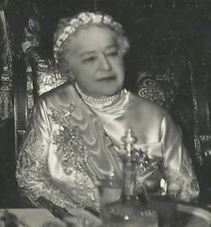
Melek Hassan Tourhan was the second wife of Sultan Hussein Kamel of Egypt. After her husband ascended the throne in 1914, she became known as Sultana Melek.

Soliman Pasha al-Faransawi, was a French-born Egyptian military commander.

Shivakiar Ibrahim was an Egyptian princess and a member of the Muhammad Ali dynasty. She was the first wife of King Fuad I.
The Albanian community in Egypt began with government officials and military personnel appointed in Ottoman Egypt. A substantial community would grow up later by soldiers and mercenaries who settled in the second half of the 18th century and made a name for themselves in the Ottoman struggle to expel French troops in 1798–1801. Mehmet Ali or Muhammad Ali, an Albanian, would later found the Khedivate of Egypt which lasted there until 1952. In the 19th and early 20th centuries, many other Albanians settled into Egypt for economical and political reasons. However, in later years the activities of the fedayeen, Muslim Brotherhood, as well as the greater Egyptian Revolution of 1952 resulted in the Albanian community in Egypt largely abandoning the country and emigrating to Western countries.
Mahmoud Fakhry Pasha (1884–1955) was an Egyptian politician and diplomat. He held several cabinet and high-ranking diplomacy posts. He was related to the royal family of Egypt who married first the daughter of Sultan Hussein Kamil and then the daughter of King Fuad.

Abdel Rahim Sabri Pasha was the governor of Cairo from 1917 until 1919 and served as the minister of Agriculture. He was the father of Queen Nazli.
